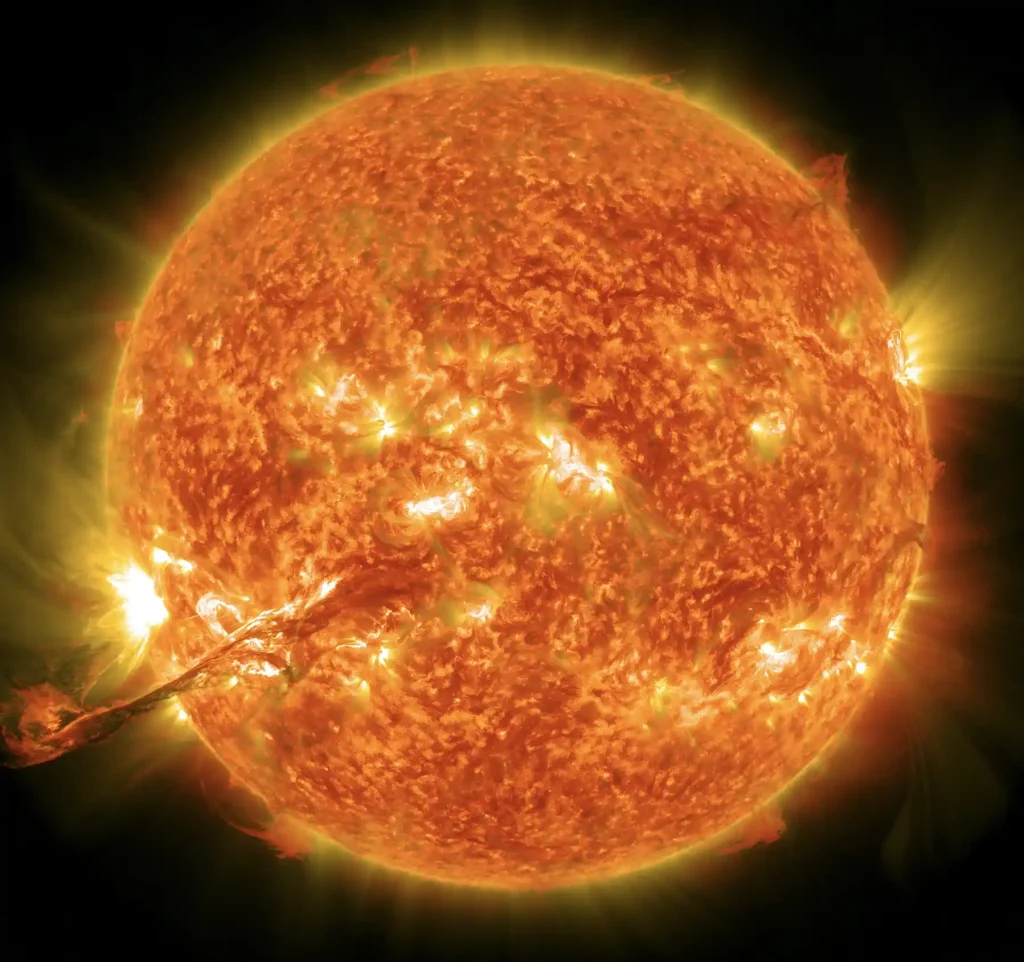How Many Lumens Is The Sun? The Answer Is Here
A lumen is a measurement unit used to estimate the total amount of visible light produced by a light source, such as lamps or bulbs. But have you ever wondered how many lumens the sun is? The sun is a giant ball of fire that emits an incredible amount of light. So let’s see how we can measure that scorching light!
How Many Lumens Is The Sun?
The sun produces around 4.48e26 lumens, equal to 92.9 teralumens. It’s too bright for us to look at with the naked eye.
The sun is a star with about a mass of 4.6 million times the Earth. Besides, it shines almost 150,000 times as brightly as our planet.
The sun generates a massive level of electromagnetic radiation, and most of it is visible light. This star outshines many other stars in the galaxy. And because it’s closest to the Earth, it looks so bright.

So how can we measure the number of lumens emitted by the sun? The result we share above is just an estimate. In fact, we can’t give an accurate answer because the intensity of sunlight constantly changes throughout time and location. But it’s undoubtedly a huge number.
Scientists use telescopes, satellites, space shuttles, and much more advanced equipment to measure the sunlight at a specific time of the day in a specific location.
The sun’s brightness on the Earth is solar constant. It’s 1366 watts per square at the location on the Earth’s surface where the sun is the brightest.
How Many Lumens Of The Sun Can Reach the Earth?

The sun is more than 150 million kilometers, or 1 AU, away from the Earth. However, most of the sunlight can’t reach the ground because the atmosphere absorbs it. More specifically:
- 70% of the radiation that enters the Earth penetrates the Earth’s surface and the atmosphere.
- The remaining 30% doesn’t heat the ground because it’s reflected.
We can calculate the surface area ratio of a sphere with a 1 AU radius to a circle with the Earth’s radius. The resulting values are about 281 sextillion and 127 trillion square meters, respectively.
The result shows that the amount of light that doesn’t reach the Earth is 2.2 billion times greater than the amount that does. Based on this ratio, we can estimate that the Earth receives approximately 16 quintillion lumens of sunlight.
How Many Lumens Is Dangerous?

Looking straight at the sun is unpleasant, but glancing at it doesn’t cause much trouble. Depending on its intensity, visible light is neither hazardous nor sufficient to result in chronic blindness.
In low-light conditions, 80 lumens are bright enough to trigger temporary light blindness. Nevertheless, 200 lumens in the daytime might temporarily affect vision.
Excessive sunlight exposure—especially to some forms of non-visible radiation like ultraviolet (UV) and infrared (IR) light—can be dangerous to one’s health.
Aside from vision, exposure to high levels of UV light causes sunburn, skin damage, and the risk of skin cancer.
Check this video, and you will understand how harmful the UV rays are:
What Is The Difference Between Sunlight Vs. Sunshine?
Many people use sunlight and sunshine interchangeably, but they actually have slightly different meanings.
Sunshine is the unobscured, direct sunlight that lands on the Earth, whereas sunlight is the full electromagnetic energy of the sun, particularly the visible range.
When clouds don’t block the direct solar radiation, the sun emits dazzling light and radiant energy, which is sunlight.

During the day, the Earth’s atmosphere scatters and filters the sunlight when the sun is just above the horizon. Then, we have daylight.
Direct solar radiation hits the Earth’s surface for a while, and we call this length of time “sunshine duration.”
Conclusion
The sun emits a vast amount of lumens that scientists can’t even give you an accurate answer to. It even varies depending on the location and time of measurement.
Because of the intense heat and brightness, avoid looking at the sun with the naked eye. Besides, do not expose your skin to the sunshine too often, or the UV light will ruin it.
Hopefully, you will find this article helpful. Studying about the sun is fun, right? So if you have any interesting questions, don’t hesitate to send us. We will cover it in the next topic. Thank you for reading!
Pete is a software engineer who currently works full-time managing MarsScreen.com. On the side, he enjoys coding his own projects and spending time with his wife and two dogs. When he's not working or hanging out with family and friends, you can find him playing the guitar or running. My Instagram.






